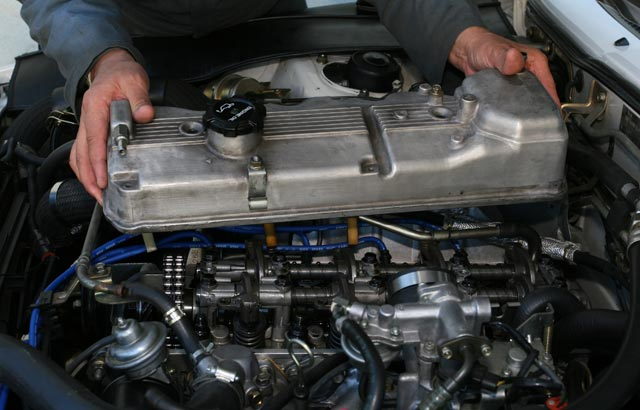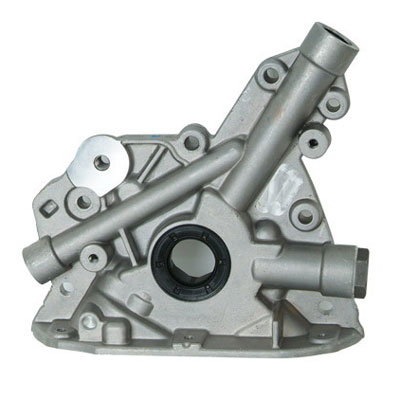Ford Mustang GT 2005-2014: Why is My Oil Pressure Light Flashing?
The oil pressure light could mean a little more than an issue with the oil pressure. Read on to learn why your Ford Mustang GT's oil pressure light is flashing.
This article applies to the Ford Mustang GT (2005-2014).
The oil pressure light could mean your oil pressure is a concern, but it could also mean other things. Nothing is more annoying than driving your Ford Mustang GT and seeing the oil pressure light flash. When this happens, it's recommended you don't drive the car until you know what the issue is. Engine oil is an extremely important component when it comes to protecting your engine. The oil is the lubrication that allows your engine's metal components to rub together without wearing or overheating, so it's recommended you fix any oil related problems as soon as they arise. Read this guide to get an idea of the possible components that could be causing your oil light to flash.


Material Needed
- Flashlight
Step 1 – Check oil level
It could be low or high.
The first and easiest thing you can do to diagnose an oil relate issue is to check the oil level. Open the hood and check the engine oil dipstick. If the oil is too low, add some immediately and then check for leaks under the car. If it's too high, slide under the car and drain some oil through the oil pan's drain bolt.

If the oil level is proper, proceed to Step 2.
Step 2 – Check valve covers
They could be leaking.
You should only check this if the oil level is low, which could mean it's leaking and there is no trace of the leak because the exhaust manifold is burning the oil as soon as it touches it. Look very closely around the edges of it, if you see any kinds of leaks, you will need to remove it, scrape off the seal, reseal it, and install it back on.

Pro Tip
The valve covers' leak could be untraceable because of the exhaust manifold; however, there could be obvious leaks causing the light to flash. Check all around the engine for leaks.
If there are no leaks, proceed to Step 3.
Step 3 – Check the oil pressure sensor
It could be faulty.
If the oil pressure sensor is faulty, it could give false readings, which will cause the oil pressure light to turn on. The oil pressure sensor is located near the oil filter, mounted to the engine. If you see any oil on it, then it's bad. This means it's allowing oil to go past it, which gives a false reading.

If the oil pressure sensor isn't leaking, proceed to Step 4.
Step 4 – Check oil pump
It could be faulty.
The oil pump is what pumps oil from the oil pan and into the engine. If it's not working properly, it won't pump enough oil into the engine, which will cause the sensor to light on, indicating a problem with the oil pressure. A bad oil pump can cause three things: it could cause low oil pressure, high oil temperature, or noise coming from your engine, which is the sound of the lifters moving without enough lubricant (the oil). If you're experiencing any of these three sings and you've checked the components above, you may need to replace the oil pump. To do so, you will need to drain the engine's oil, remove the oil pan, replace the pump, which is located inside the pan, and clean as well as reseal the pan, then mount it back on.

Related Discussions
- Oil Light - MustangForums.com
- How Test Oil Pressure Light - MustangForums.com
- Check Oil Light - MustangForums.com






